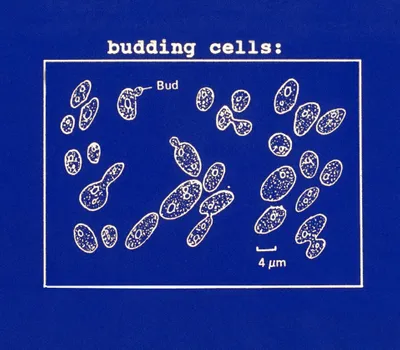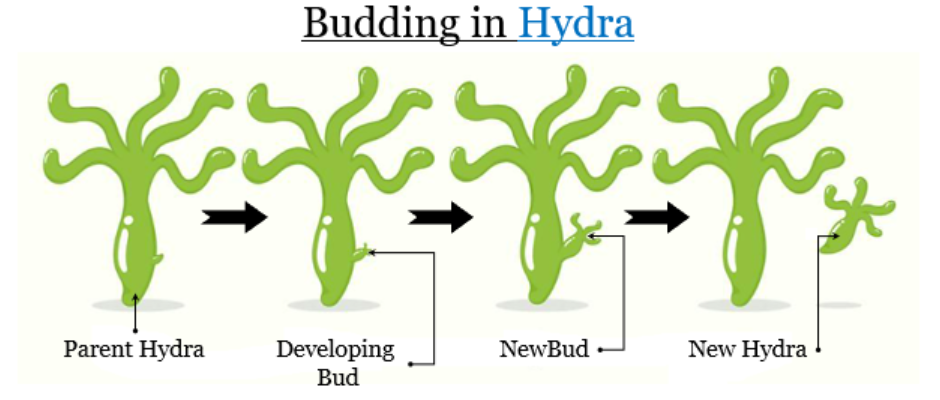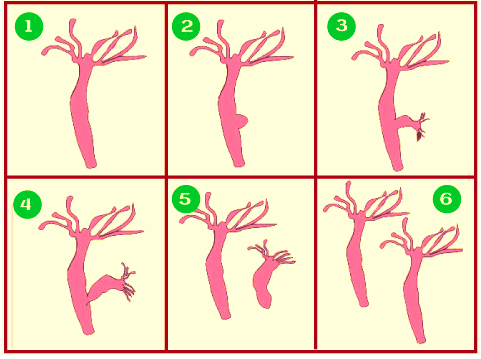Budding (the mode of reproduction in Hydra) is an asexual mode of reproduction by which new organisms arise from their parent. The offsprings produced are an identical copy of the parent and are called clones. It occurs by the formation of buds in the parent which later on develop into the offspring, hence the name ‘Budding’.
It is a common mode of reproduction seen in organisms such as yeast, corals, sea anemones, hydra, etc.
This article will help you understand the main concepts of budding and how it occurs in Hydra.

Index
What is Budding?
Budding refers to a state of initiation of development in an organism, i.e. it is a form of reproduction. It is characterized by the formation of a bud asexually. The outgrowth or bud occurs as a result of cell division and cell proliferation at a particular site on the organism’s body and it eventually grows to give rise to a new organism.
This bud grows randomly and there is no specific order or direction they follow. The newly developed organism remains attached as it grows further. Once the offspring gets fully developed, it is separated from the parent organism.
The area of separation is marked by scar tissues. Since the reproduction is asexual, the newly created organism is a clone and excepting mutations is genetically identical to the parent organism. It is found in both unicellular (e.g. budding bacteria and yeast cells) and multicellular organisms (e.g. plants and sponges).
Hydra
Hydra is a genus of multicellular freshwater organisms of the phylum Cnidaria belonging to the class Hydrozoa. They are native to temperate and tropical regions. They possess a special feature of regeneration which makes them an interesting subject for research. They can reproduce both sexually and asexually. The most common method of asexual reproduction in Hydra is budding.
What happens during budding in Hydra?

In hydra, a bud develops as an outgrowth due to repeated mitotic cell division at one specific site. These buds develop into tiny individuals marked by the formation of small tentacles and mouths. Once the offspring becomes fully mature, it detaches from the parent body and becomes a new independent individual. Hydra has special regenerative cells for reproduction which plays an important role in the process of budding.
Stages: Bud formation to fully grown Hydra
The parent hydra goes through gradual stages of budding which is depicted in the image below:

- Stage 1 represents the hydra body prior to bud formation
- Stages 2-4 represent the initiation of outgrowth/bud formation and maturation of the bud.
- Stage 5 represents the progeny Hydra gradually detaching from the parent body by cleavage.
- Finally, stage 6 shows the new Hydra that is a clone of the parent.
FAQs
In horticulture, the term budding refers to a method of plant propagation in which a bud of the plant to be propagated is grafted onto the stem of another plant.
Both binary fission and budding are modes of asexual reproduction but they differ in the fact that in the former, the parent cell is lost after cell division while in the latter the parent organism survives.
Yeast is a unicellular organism while hydra is a multi-cellular organism In yeast, the bud originates from a small protuberance on the parent body, while in hydra the bud arises due to the repeated mitotic division.
